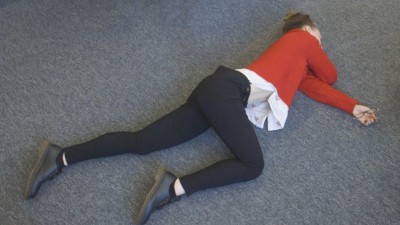Neurodiversity information for parents and young people
About reflex anoxic seizures (RAS)
RAS are brief pauses in breathing that cause your child to pass out or faint temporarily, usually triggered by pain, fear or anxiety. Whilst they are called seizures, they are not epilepsy or fits.
They can occur at any age, but they are most common in children between ages 6 months to 2 years. It is estimated that RAS affects 8 in 1000 preschool children.
RAS can occur occasionally (as single seizures) or in clusters. They can occur several times per month, per week or per day.
Most children grow out of RAS. Some continue to get RAS into adulthood but the seizures tend to lessen as they get older.
What happens during a RAS
During a RAS, your child will become limp and lose consciousness. Any of the following may also happen:
- their eyes may roll back and they may clench their jaw
- they may look pale, potentially with a blue tinge below the eyes and around the mouth
- they may experience stiffening or jerking of their limbs
- they may wet themselves.
This only lasts for 30 to 60 seconds. Your child will usually recover quickly and be back to normal within a few minutes, but may be sleepier than usual.
![]()
See your GP or attend your nearest Emergency Department (A&E) if you are worried about your child.
What to do if your child has a RAS
- Stay calm: the stress of seeing a parent distressed can trigger a second seizure. It is important to try and stay as calm as possible.
- Reassure your child: some children have reported being able to hear during these seizures, so reassuring them is helpful.
- Put your child in the recovery position, ideally in a safe environment. For example on the floor and away from any objects that might be harmful. Your child’s hand should support their head and one of their knees should be bent to prevent them rolling onto their stomach.

- Ensure your child’s airway is clear. Make sure nothing is in their mouth that might cause them to choke. Be careful not to get your fingers caught between their teeth.
- Try to time how long the seizure lasts.
- Video the seizure if possible, so you can show your GP or healthcare professional.
- Once your child recovers, give them lots of reassurance and cuddles as they are likely to be emotional. They may also be drowsy or disorientated. If they want to sleep for a few hours, let them get some rest.
Seizures lasting 5 minutes or more
If the seizure lasts for 5 minutes or longer, call 999 and ask for an emergency ambulance.
How to avoid RAS triggers
Do not exclude your child from any activities, but let a responsible adult know about your child’s condition. Let them know what to do if your child has a RAS.
- Pre-warn your child of the potential risks involved in some activities, such as falling over. This will help take away the shock and hopefully prevent a RAS.
- Sports: allow your child to watch and get used to an activity before taking part. This will reduce potential shocks.
- Swimming: allow your child to sit on the side of the pool with their legs in the water, gently wetting the rest of their body before lowering themselves into the pool. This will remove the shock of the temperature change.
- Immunisations: warn your child what will happen. Reassure them and talk them through the immunisation in real time. This can take away the shock of any sudden pain.
Diagnosis of RAS
Often the diagnosis can be made from a good description by somebody who saw the event.
We recommend you keep a diary of the seizures, including the possible triggers. Or you can take a video on your phone. Bring these with you to medical appointments.
Usually no investigations are needed. If there is doubt about the diagnosis, some doctors may organise the following tests:
- 12 Lead ECG (echocardiogram): this test is to rule out any underlying abnormal heart rhythms (which can be hereditary). We may use a heart rhythm monitor for longer periods, for example over a week.
- EEG (electroencephalogram): this tests the electrical activity in your child’s brain.
- Tilt Table test: this is used to induce a seizure (while attached to EEG and ECG monitoring).
Treatment
Speak to your healthcare professional if your child’s seizures are frequent or you are worried. They may refer you to a hospital paediatrician who can discuss further treatment options with you.
Contact information
Paediatric Admin Team, Monday to Friday 9 am to 5 pm
Telephone: